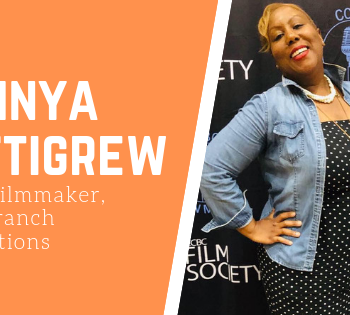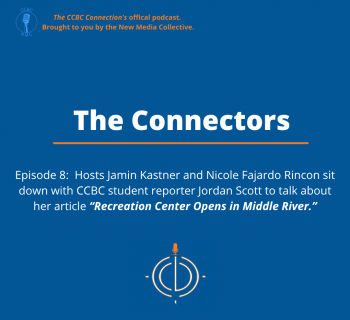Lisa Gray
CCBC recently redesigned the online transfer center in a three-step format and is in the process of releasing a dual admission program for transfers with their four-year partners as part of an ongoing initiative to build a transfer culture at CCBC.
“CCBC is in the process of launching a dual admission program with many of our 4-year partners that will include co-advising by the 4-year partner,” said Ann Gamble, Director of Transfer and Degree Acceleration. “Our goal is to ensure that CCBC students are guided through the transfer process. We already have this agreement with University of Maryland Global Campus, so interested students can reach out to me.”
Transferring schools is often an arduous process with many moving pieces to keep track of. Students may feel overwhelmed and miss out on key opportunities to make the most of their time. Finding a path to choose is difficult enough. With all of the big and small pieces, it’s hard to know where to begin.
Luckily, CCBC offers many resources and contacts to offer clarity to students and lessen the burden.
According to the transfer page on the CCBC website, “Deciding where to go after earning your CCBC degree may seem daunting, but there are many resources to develop a transfer plan.”
CCBC has many academic advisors available, including advisors who specialize in transferring. This team includes Rae Rosenthal, The Honors Program Transfer Advisor, Ann Gamble, Director of Transfer and Degree Acceleration, and Courtney Topolski, Assistant Director of Student Services. There is a link to advising on the webpage.
Rosenthal said that the best piece of advice she can give to students starting off is to research. “The more you learn about colleges, applying, the transfer process, financial aid, the better informed and positioned you will be.” She suggests meeting with an advisor to guide the research process.
It is important that students take their time to explore their options and find the path best suited for them. Rosenthal points out that the process is always easier once a major and path of study has been selected.
“The best advice we can give is to start the transfer planning process early and really spend time exploring the many options in the region and beyond,” said Gamble. “Once a student has identified their list of prospective transfer schools they should spend time preparing by visiting the schools, researching their transfer admission process, and investigating each school’s financial aid process…apply to three to five schools.
Alongside the transfer center and the upcoming dual-program, Gamble also mentions other resources available to students of CCBC. There are links available on the transfer center regarding transfer agreements, as well as financial aid and scholarships. All transfer events are available to students on the homepage. Events are also posted on CCBC’s Facebook transfer page @CCBCTransferPlanning, as well as their instagram @ccbctransfer.
Gamble pointed out library guides available that provide information on all of Maryland’s four-year colleges, as well as top historically black colleges and universities.
The “Transfer Tuesday” series is a virtual series focusing on a new transfer-related topic each Tuesday.
Students looking to transfer can easily feel lost and overburdened. College searches and applications are meticulous processes which are hard to get through without a sense of direction. Transfer students are loaded with questions.
Both Gamble and Rosenthal stated that the most commonly asked questions are about cost (of attending and applying), transfer of credits, and selection of schools.
Students can utilize their time at CCBC to help with these challenges or any others. Gamble and Rosenthal both emphasize the importance of making connections with faculty and staff. Participating as much as possible as well as getting good grades helps provide more opportunities and looks good on applications.
“Your time at CCBC will go quickly, so do what you can to make the most of all the opportunities and connections because you never know how they may serve you in the future,” said Gamble.
One of the best pieces of advice Gamble offers to students is to acquire a CCBC degree before transferring. Benefits include less cost per credit, job promotions, and transferring credits as a package.
A CCBC degree is particularly helpful for students transferring to Maryland schools.
Taking as many “standard” courses as possible will increase the chances of a smooth transition of credits.
Four-year schools are becoming increasingly generous with their financial aid, stated Rosenthal. Don’t be scared by the sticker price. Students should apply to as many schools that interest them and apply to at least one public in-state school. Be aware of financial aid and scholarship deadlines. Some schools only offer it in the fall.
Applications can be one of the hardest parts of transferring. Gamble says to give yourself time and mark all the deadlines.
“Be yourself, show who you are, what successes you’ve had, what challenges you have encountered,” said Rosenthal. “And remember you are interviewing schools as much as they are interviewing you.”
Gamble also adds to the list of questions about "common anxieties." Students worry about making the right decision, fitting in, and capability regarding the coursework. “Change is never easy, and as you can imagine going from a place with a culture like CCBC to a completely new place with a new culture that is unique to that institution, it can be quite intimidating,” said Gamble.
To help with this anxiety, Rosenthal stresses the importance for transfers to find groups or clubs to be a part of. Groups such as clubs, transfer organizations, and honors programs all provide a valuable sense of community and belonging.
Transferring, with all the possibilities and questions, can feel very isolating. Students may see their other friends settled and feel alone. However, it is important to know that many young adults are going through similar experiences and struggles. “Culture shock is as real as imposter syndrome,” said Gamble. “Those feelings are frequently felt by transfer students and can further their struggles.”
“Like with everything else, preparation is key,” said Gamble. “But life does happen, and you have to do what you think is best in the moment and take it as a learning opportunity.”
To visit the Online Transfer Center Follow this link:
https://www.ccbcmd.edu/resources-for-students/online-transfer-center














